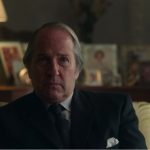This post refers to the first season of ‘The Crown.’ Here is a look at classical music in Season Two.
In the Netflix original series “The Crown,” music plays a significant role in heightening the drama and majesty of the British throne. A glance at the show’s IMDB page reveals that this is no shoestring operation: The music staff numbers some 20 editors, producers, engineers and composers, with much of the soundtrack supplied by British film composer Rupert Gregson-Williams. The cinematic title theme, by Hollywood veteran Hans Zimmer, broadly alludes to the ceremonial music of Henry Purcell.
The series also contains some moments of preexisting classical music. Handel’s coronation anthem Zadok the Priest naturally makes an appearance, in the coronation scene for Queen Elizabeth II, as does a bit of Offenbach’s Orpheus in the Underworld, in an Episode Six party scene. And two climactic moments involve Austro-German composers rather than the English favorites of the monarchy (perhaps appropriate given the German heritage of the House of Windsor?).
In Episode Three, against the backdrop of King George’s funeral and ensuing family strife, the Queen and Prince Philip attend a performance of Wagner’s Tristan und Isolde at the Royal Opera House. The opera – about a king’s daughter (Isolde), who is caught between wifely and regal duties – provides some foreshadowing in the episode. As Elizabeth and Philip attempt to enjoy a night out together in the royal box, Wagner’s Liebestod (Love-Death) swells up; an ominous shadow falls over the new Queen’s face.
Episode Four, “Act of God,” begins as the great smog of 1952 overtakes London, and Winston Churchill is under fire for not taking action. Early in the episode, a team of meteorologists predicts the arrival of the deadly smog (which would claim anywhere from 3,500 to 12,000 lives) while politicians look the other way. As the camera peers through a London window up at the nighttime sky, before panning down to a line of billowing smokestacks, the Lacrimosa from Mozart’s Requiem is heard. The piece, with its text concerning judgment and mercy, returns later in the episode, providing a thematic bracket after Churchill manages to dodge the bullet.
And in Episode Nine, the hints of Purcell in Hans Zimmer’s title theme become more explicit near the end of a scene in which the artist Graham Sutherland paints an 80th birthday portrait of Churchill. As Sutherland drives off from Churchill’s country house, the aria “What Power Art Thou (Cold Genius)” from Purcell’s King Arthur creeps in, its quavering strings underscoring the two men’s discussions of art’s transcendence (while foreshadowing the prime minister’s later forceful reaction to the portrait).
Though series director Peter Morgan makes ample use of his in-house composers, the use of iconic classical themes in “The Crown” serves to cement the series’ larger themes. With six seasons currently planned, time will determine whether we hear works by Vaughan Williams, Britten, Walton and other English composers who wrote music for the monarchy during the 20th century.
Updated Jan. 21, 2017








Leave a Reply